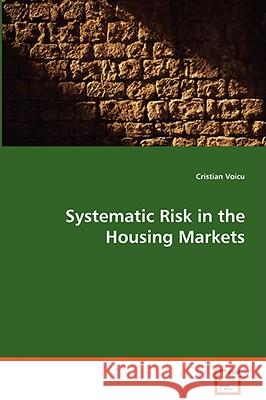Systematic Risk in the Housing Markets » książka
Systematic Risk in the Housing Markets
ISBN-13: 9783639068221 / Angielski / Miękka / 2008 / 92 str.
In the first chapter, a one-factor pricing model is employed to investigate the total returns of single-family homes and pro-fessionally-managed properties. Portfolios of East and West Coast cities have negative risk-adjusted returns, while a portfolio of all inland cities has positive alpha. Positive alpha can be achieved with portfolios of high rental yield cities, small cities, low median price cities, or low beta cities, while the opposite strategies generate negative alpha. A possible explanation for these abnormal returns is that some cities are systematically neglected by investors. In the second chapter, I explore the optimal way in which housing derivatives should be used to mitigate housing risk. Households should hedge housing both as investment and as consumption. Housing investment risk is hedged by selling housing futures amounting to the full value of the home. Housing consumption risk is hedged by buying housing futures in each city where the household might move. The size of the hedges depends on the probability of moving and on home values in each city. This framework can also be used to simplify the rent versus buy decision.
In the first chapter, a one-factor pricing model is employed to investigate the total returns of single-family homes and professionally-managed properties. Portfolios of East and West Coast cities have negative risk-adjusted returns, while a portfolio of all inland cities has positive alpha. Positive alpha can be achieved with portfolios of high rental yield cities, small cities, low median price cities, or low beta cities, while the opposite strategies generate negative alpha. A possible explanation for these abnormal returns is that some cities are systematically neglected by investors. In the second chapter, I explore the optimal way in which housing derivatives should be used to mitigate housing risk. Households should hedge housing both as investment and as consumption. Housing investment risk is hedged by selling housing futures amounting to the full value of the home. Housing consumption risk is hedged by buying housing futures in each city where the household might move. The size of the hedges depends on the probability of moving and on home values in each city. This framework can also be used to simplify the rent versus buy decision.











